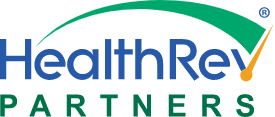OASIS E was one of the most extensive updates in the history of the OASIS data set. Many new items and new OASIS sections went into effect on January 1, 2023. Section K is a new section that was added to the OASIS data set to capture documentation related to swallowing and nutritional status. A few items that appear on previous OASIS data sets are located in Section K, including M1060-Height and Weight, and M1870 Feeding/Eating. In this blog, we will discuss the one new item that will make its debut in OASIS E Section K, K0520-Nutritional Approaches.
Click here to schedule a conversation with HealthRev Partners to get effective home health OASIS reviews done with no money down.
K0520 Nutritional Approaches Key Terms
Before assessing a patient’s nutritional status and means of receiving nutrition, let’s clarify a few key terms related to Item K0520.
Parenteral/IV Feeding
Parenteral/IV feeding is when nutritive substances are introduced into the body by means other than through the intestinal tract. This would include both subcutaneous and intravenous routes.
When assessing a patient’s nutritional status, it is important to remember that fluids provided solely to maintain access and parenteral patency are excluded from K0520. The table below shows what is and what isn’t included when documenting a patient’s nutrition on K0520.
|
Included in K0520A |
NOT included in K0520A |
|---|---|
|
|
Feeding Tube
Nutrition via feeding tube is any type of tube that can deliver food/nutritional substances, fluid, or medications directly into the GI tract. Only feeding tubes used to deliver nutritive substances and/or hydration during the time period under consideration should be included. This includes methods such as: Nasogastric Tube, Gastrostomy Tube, Jejunostomy Tube, and PEG Tube (percutaneous endoscopic gastrostomy).
Mechanically Altered Diet
Mechanically Altered Diet includes intentionally altered texture or consistency of food to facilitate oral intake. This would include alterations such as: soft solids, pureed food, ground meat, and thickened liquids.
Therapeutic Diet
Therapeutic Diet includes a prescribed diet intervention that provides food/nutrients via oral, enteral, and parenteral routes as part of treatment of a disease/condition. The goals of a therapeutic diet is to modify, eliminate, or decrease/increase identified micro- and macro nutrients in a patient’s diet. This can include eliminating a food allergen from a patient’s diet, such as peanut butter or milk.
Enteral feeding formulas should not be coded as a mechanically altered diet. The only exception would be if the formula is altered to manage a problematic health condition. (Example: enteral formulas specific to diabetes)
Nutritional Supplements do not constitute a therapeutic diet but may be part of atherapeutic diet. SO, whether taken with, in-between, or instead of meals, they are only coded in K0520D when they are being taken as part of a therapeutic diet to manage a problematic health condition. (Example: supplement for protein calorie malnutrition)
Food Elimination: When related to food allergies are therapeutic diets.
Scoring K0520 Nutritional Approaches on the OASIS
Altered nutritional approaches can have a negative impact on a patient’s outcomes. Not only do alterations have the potential to diminish the pleasure of eating, but it can negatively impact a patient’s dignity and self-worth. Swallowing difficulties or changes to body image due to poor nutrition/weight loss can be embarrassing for patients and frustrating, which is why it is important to accurately report a patient’s nutritional approaches.
When is it appropriate to use a dash for scoring?
Dash is an appropriate response for K0520 but with the impact potential on outcomes, a dash should try to be avoided if possible, and rarely used. If the patient is unable to provide necessary information, clinicians can consult patient, family, or caregiver and/or review clinical records to determine if applicable.
When documenting this item, the clinician will mark all that apply during the last 7 days leading up to SOC/ROC and all that apply at time of discharge. If the patient will receive one of the nutritional approaches as a result of this SOC/ROC assessment (for example, IV hydration will be started at this visit or a specified subsequent visit; the physician is contacted for an enteral order, etc.), mark the applicable nutritional approach.


